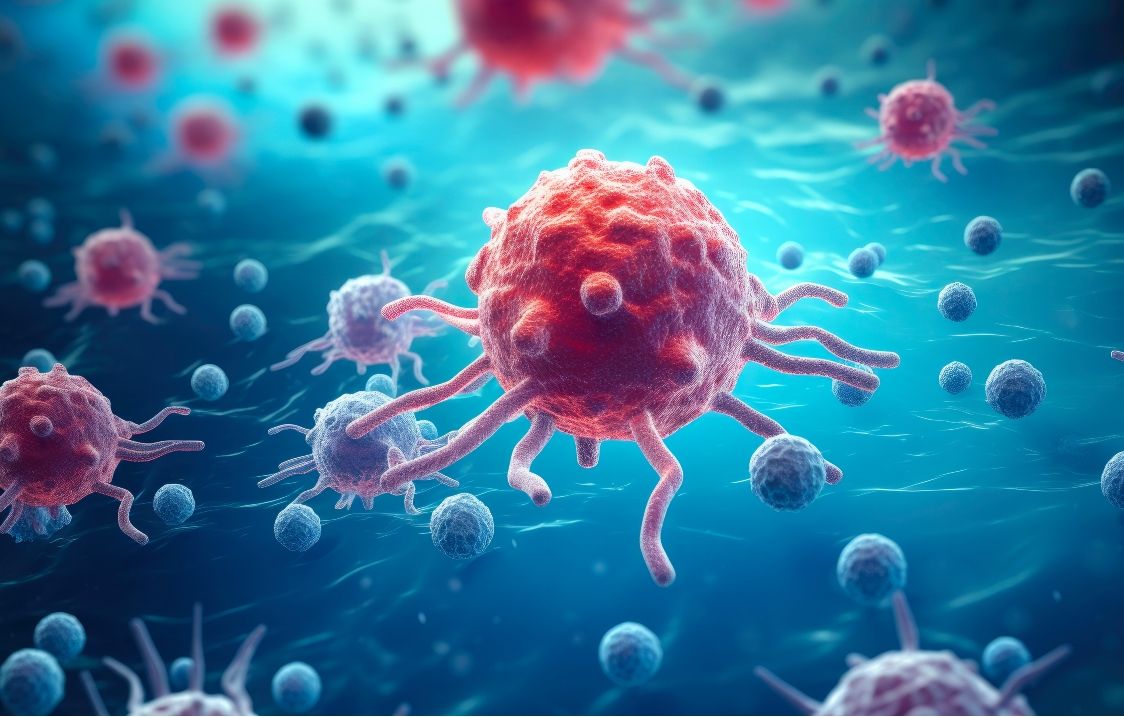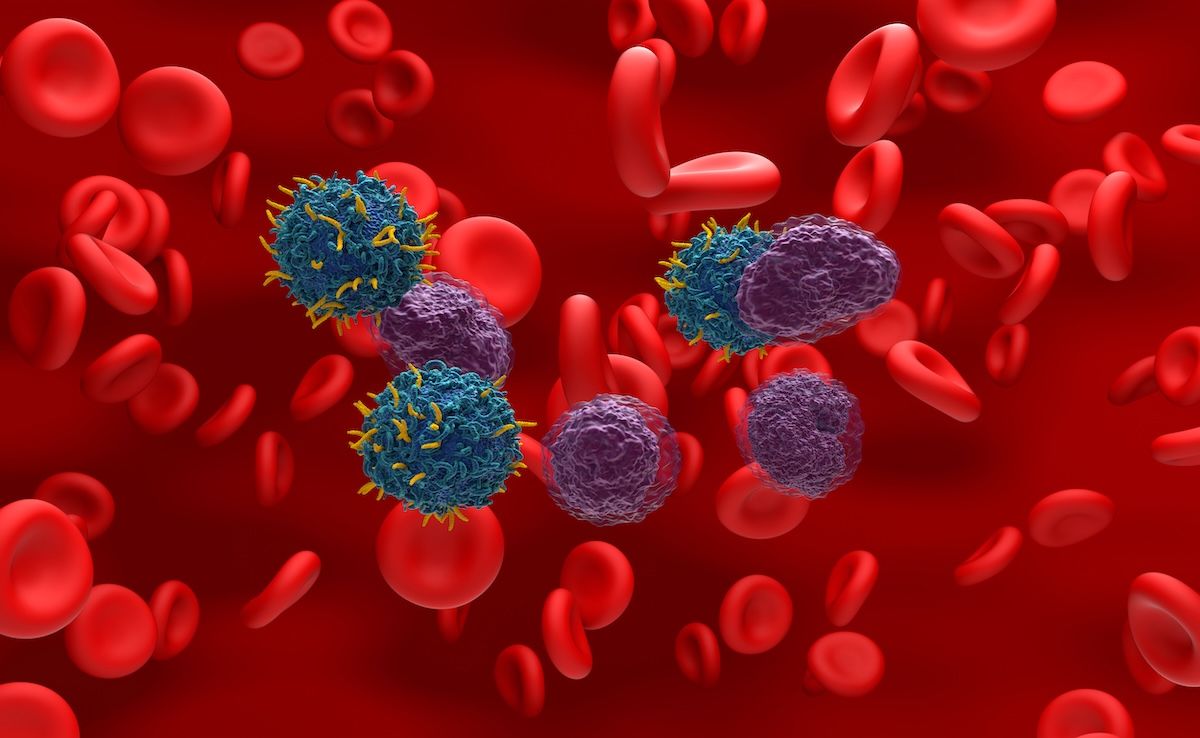Video
CANDOR Trial Overview and Regimen Complications
An overview of the data from the CANDOR trial presented at the ASH (American Society of Hematology) 2020 annual meeting and discussion on how to manage various complications from the trial regimen.
C. Ola Landgren, MD, PhD: We talked about the use of carfilzomib [Kyprolis] with daratumumab and dexamethasone in the relapsed setting. The CANDOR study uses carfilzomib twice a week with 20 mg/m² for the first 2 doses, then 56 mg/m² for the subsequent doses. It was day 1, 2, 8, 9, 15, 16 dosing. Daratumumab on the CANDOR study was given intravenously with a standard dosing schedule of 8 weekly, 8 every other week, and then every 4 weeks.
This is the experimental arm. For the control arm, it was only carfilzomib and dexamethasone on the schedule, so no daratumumab. The paper was published a few months ago in The Lancet. Because it takes so long to publish papers, just a few months later now at ASH [the American Society of Hematology 2020 meeting] there was an update showing we’ve added almost 1 more year of follow-up time. The median follow-up was around 27, 28 months for the 2 arms, respectively.
The study shows that the 3-drug combination, KDd [carfilzomib, daratumumab, dexamethasone] delivers a median PFS [progression-free survival] of 28.6 months–very powerful. The Kd [carfilzomib, dexamethasone] is 15.2 months; of course that’s strikingly significant and the hazard ratio is estimated to be 0.59. What do you think about that Rafael?
Rafael Fonseca, MD: It is really remarkable. This study is critical because we were alluding to the fact that we’re all moving into the combination of an antibody like a DARA [daratumumab] or ISA [isatuximab] plus a proteasome inhibitor [PI], in this case carfilzomib.
It is so important in the setting of the United States because now the majority of patients, with a few exceptions, should be on maintenance if they have gone through a prior stem cell transplant. In my mind, one of the most important questions would be, can we find a way that we can predict insensitivity to an IMiD [immunomodulatory imide drug], or not? If you don’t have IMiD sensitivities, you’re throwing your money down the drain if you treat someone with KRd [carfilzomib, lenalidomide, dexamethasone] or KPd [carfilzomib, pomalidomide, dexamethasone] without any IMiD efficacy. We don’t have that question when we combine a PI plus a monoclonal antibody.
I think the results are remarkable. If you put them in perspective; let’s take that number, 28 months for a PFS. I’m not sure what that is going to mean for overall survival, but I always say now if you look at induction, you get your transplant, you get your maintenance, you put 53 months from main analysis, and you add another 28 months from PFS. This is solidly putting the median survival of [multiple] myeloma in the 8-to-10-year range, if not more.
Again, I’m just using those figures and putting all that information together. It’s remarkable because that means someone who’s diagnosed today has a good chance of living up 10 years from now; I think this is the way to go. This is the transition of moving from an IMiD combination to a DARA [daratumumab] plus PI combination, in this case with carfilzomib. I think we’ll have to see. The beauty of myeloma is this is going to be challenged soon by the conversation we’ll have about bispecific antibodies and CAR [chimeric antigen receptor] T cells.
C. Ola Landgren, MD, PhD: That’s coming up soon. Because I know you like to give the newly diagnosed patients carfilzomib to avoid neuropathy with bortezomib, I was asking Luciano, if you used DARA [daratumumab] up front, can you use it at relapse? I ask you the same question for carfilzomib: If you gave your patient KRd [carfilzomib, lenalidomide, dexamethasone] to begin with and the patient was on REV [Revlimid/lenalidomide] maintenance, if the relapse comes, could you give carfilzomib with DARA [daratumumab] in this relapsed setting?
Luciano Costa, MD, PhD: Yes, that’s great, Ola. I think the experience would be, as we use proteasome inhibitors more for a limited duration as part of the initial therapy, either at the induction or induction/consolidation. Bythe time those patients progress, the vast majority are not going to be refractory to the proteasome inhibitor. Different from bortezomib, where the neurotoxicity is cumulative and for the most part irreversible, there’s not much in the way of cumulative toxicity for carfilzomib. There’s the cardiovascular signal, but that seems to be, as best as I understand, almost idiosyncratic and reversible. In my experience, patients who tolerate well carfilzomib, the vast majority will tolerate again and will benefit again when carfilzomib is employed at a time of relapse.
In our practice, and I expect yours and Rafael’s, I don’t know much about Ajai’s, but I believe it’s the same case; it would be extremely uncommon that we use bortezomib in the relapse. If we’re going to use a proteasome inhibitor in therelapsed setting, where the data are better, and the edge and the efficacy are more crucial, we’re definitely going with carfilzomib. We’ve abolished administering carfilzomib on a biweekly basis and moved to weekly.
C. Ola Landgren, MD, PhD: You talked about the cardiovascular signal for carfilzomib, and you mentioned that the fluid plays a role. There was recently a publication of the ENDURANCE trial, and there was quite a lot of fluid. I think it was 13.5 liters of IV [intravenous] fluid to patients. Is that what you do in your practice, Luciano?
Luciano Costa, MD, PhD: Not at all. We all learned in the early days of carfilzomib that there was a lot of concern about the infusion-related toxicity, and there was exaggeration of the amount of fluid given. Our use was verylimited; usually we use 500 mL of fluids prior to each dose. In the setting where we combine with a monoclonal antibody, it’s one of the few settingswhere I don’t change the monoclonal to subcutaneous because the patient is already getting an IV start, or have their port access. I use the monoclonal as the pre-carfilzomib hydration.
I think with that and good control over cardiovascular risk factors, watching blood pressure, and some minimal monitoring, it’s very uncommon for patients to have cardiovascular events, particularly the serious ones.
C. Ola Landgren, MD, PhD: Addressing the safety profile, we go back to what we spent a little time talking about, the DKd [daratumumab, carfilzomib, dexamethasone] regimen. Daratumumab has for sure a signal for infection. If you look in the laboratory results for every patient who has been on it for a while, you start seeing drops of IgG [immunoglobulin G]. Can you broaden that a little bit, the safety profile of DKd [daratumumab, carfilzomib, dexamethasone]? Is it a problem, or is it just something to be on top of? What do you think?
Rafael Fonseca, MD: It is a problem to be on top of but one that we should not disregard. I can see problems with all of our treatments in ways that could bite us if we don’t address them. One of them of course being [hypogammaglobulinemia]. Patients with myeloma may have a supportive list of medications that’s going to be longer than their treatments themselves when you start putting on antivirals, antibiotics, anticoagulants. Now we’re going to have to put replacement of IVIG [intravenous immunoglobin], which is essential when you have someone who has recurrent infections.
Mind you, this is not unique to this regimen. This is an innocent bystander effect of any treatment that effectively kills B cells; we see that. We’re seeing that emerge with immunotherapies too. We see patients on those trials who have no detectable free light chains. The only way you can do that is by having a lot of the normal plasma cells go away.
I’m hoping this is a step forward but one that still needs refinement. Yes, people can live as if they have a CVID, a common variable immunodeficiency, but these are people at risk for infection. We need to get to a future where we can do this, get away, and restore normal bone marrow function.
C. Ola Landgren, MD, PhD: Now I’m going to stay with Katja [Weisel, MD’s] presentation…. She was part of the group for the first paper from CANDOR in The Lancetalso. There was another post hoc analysis that was presented at ASH of the CANDOR study. I’m going to ask you Luciano; this is the subgroup analysis when they looked at the early versus later relapses. Patients could be enrolled after 1 to 3 prior lines, and the study subanalysis focused on the comparison between after 1 line, versus after later lines. Tell us about that and what’s the importance of this.
Luciano Costa, MD, PhD: It’s essentially highlighting that the combination arm outperforms the doublet both in patients who received them as part of earlier lines of therapy as well as in patients receiving it in later lines of therapy, which is important in many ways. There’s an old misperception in myeloma that we can save the better combination for later because of the mentality that we can always use that later if it just doesn’t work. This really helps to drive home the message that the absolute benefit is greater when you use it in earlier lines of therapy. It’s interesting to see, but I don’t think anybody is surprised by the data.
Rafael Fonseca, MD: Ola, if I could add to that, there was a very interesting abstract presented at this meeting that empirically showed what we have shown indirectly with real-world data; that was a study presented by Michael Sebag [MD, PhD, from McGill University Health Centre, Montreal, Quebec]. In the Canadian system they’re looking at the expenses, and they said, “Can we use KCd [carfilzomib, cyclophosphamide, dexamethasone] and then add POM [pomalidomide] to catch up or add POM [pomalidomide] from the get-go?”
What they were able to show is that if you try the drug down the line, you cannot keep up with the losses that you have up front. This is important because even though it’s desirable, again, we have to think about the whole episode of treatment. If you just take the landmark of patients who reached that second point, you’re not really reflecting what happens in the real world.





